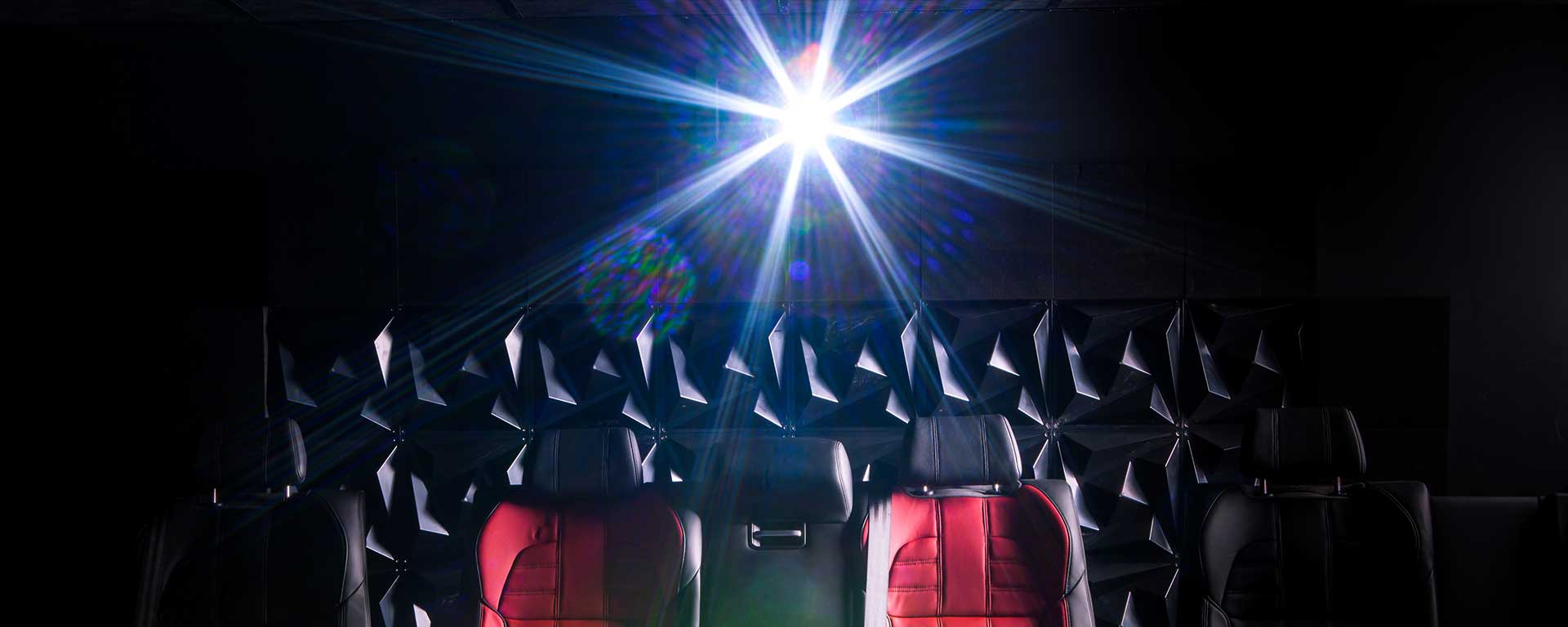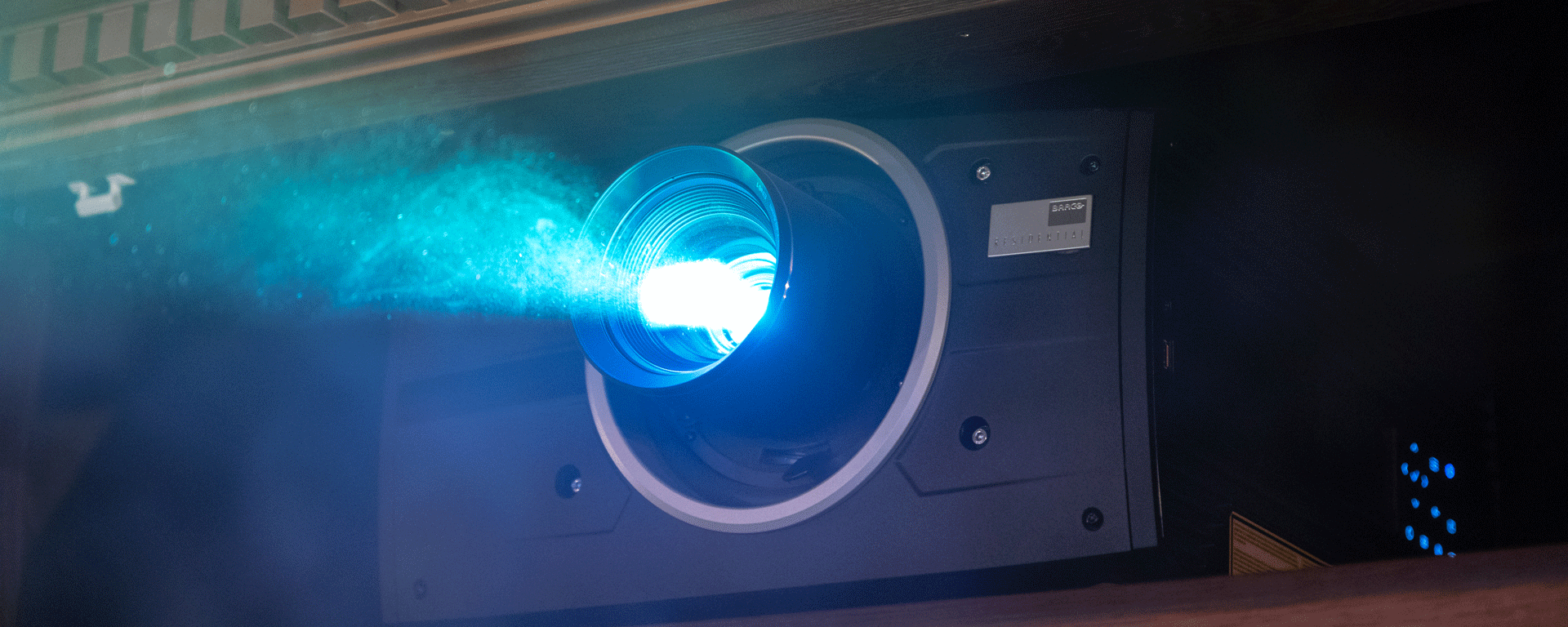Every single projector on the market will proudly claim how bright it is, but how useful is this information? We never view a projector’s brightness by looking down the lens, do we?
The indicated light output of a projector is useful, but only if we also know the size of the screen and the reflectivity (referred to as gain) of the image surface. 3000 ANSI lumen could either be incredibly bright on a 2m wide, 1.2 gain screen or all but invisible on a 7m widescreen with a 0.7 gain.
The first thing that we need to know is how to work out the brightness of the screen. Fortunately, there is a calculation for this:
Reflected Light = Projector Output x Screen Gain
The next thing that we need to know is what the number this calculation gives us actually means. The industry standard for screen brightness in cinemas is measured in foot lamberts (ft-L). The good news is, we already have a good idea of how bright screens are because we have been watching screens for years.

- Commercial theatre:14-16 ft-L
- Plasma TV: 40-60 ft-L
- OLED TV: 60-100 ft-L
- LCD TV: 80-160 ft-L
If we think about this in a practical sense, most people will agree that a plasma or OLED TV is the best choice for darker or light controlled rooms, whereas an LCD TV is better suited to bright rooms. This is because having a brighter image enables us to compete with light in the room.
If we think about putting a projector in a living room or in an environment that doesn’t have light control, we should be aiming to get close to OLED and LCD TV brightness levels. Typically, 70-120ft-L would be a good number to aim for. The best way to ensure a bright image is to go for a bright projector, typically 4500 ANSI or above for media rooms.
Moving back to the cinema design, we can use this information when specifying the projector and screen gain to ensure we hit a good level of image brightness and punch.

With projector brightness increasing significantly over the last two years or so with the introduction of laser light sources, we now have more light output than we have ever had. This is perfect for HDR content that is also increasing dramatically in availability.
Our recommendation for target screen brightness has changed to keep pace with the availability of content and technology. Based on Standard Dynamic Range (SDR) content, we would recommend aiming for 26-35ft-L.
With the greater dynamic range available on modern HDR content, we’d recommend 50ft-L. This increased brightness makes the image more realistic, with greater immersion and enjoyment.
If you’d like some support on specifying a projection system or screen solution, please feel free to get in touch with our Design and Specification Service team by sending your project details to design@distributedbym.co.uk